If you are looking for a thorough guide to the best reverb pedals, you’ve come to the right place.
We organized this article in a way that should help you figure out what kind of reverb pedal you need, guiding you through the variety of stompboxes on offer and their different features. We grouped these reverb units into several categories according to the type of reverb(s) they deliver (single or multi-function, mono or stereo), but also according to tweakability and price, highlighting what we believe are the top three options for each category. Those interested in digging deeper will find, at the bottom of each category, a link to a more comprehensive product guide entirely dedicated to it.
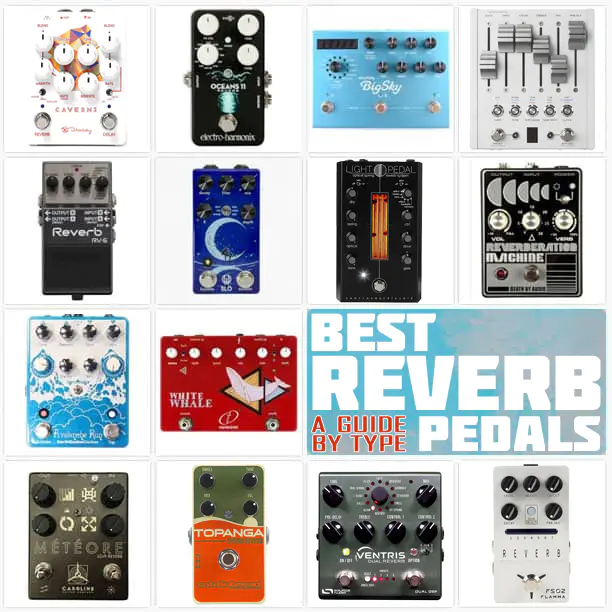
Start by choosing a type of reverb pedal from the list below – or read the article more organically, if you prefer, by simply scrolling down!

Lists updated on January 26, 2023
Best Reverb Pedals: a Comprehensive Guide
Reverb, the Origins
Reverb pedals never seem to go out of fashion, maybe because reverb is an effect that’s part of our daily lives and each one of us can relate to it.
We can experience the pleasant sonic properties of reverb in any enclosed space (often without even realizing it) and that’s the main reason why this effect was used for music centuries before the advent of the electric guitars: any sparsely furnished, more or less rectangular room is a reverb-generating environment, and larger spaces like temples or theaters can produce particularly lush and gorgeous results.
Humans started emulating this natural phenomenon in the 1930s with spring and plate reverb tanks. Since then, the technology has progressed immensely in its attempt to recreate it, with guitar pedal manufacturers playing a major role in it.
First, Understand What Kind of Reverb You Need
As you probably realized, there are several reverb stompboxes on the market for different budgets and needs, but also for different “brains” – yes because different guitarists appreciate different features, independently from their needs.
The goal of this article is to help each one of our readers find the category of reverb pedal that’s best for them.
So, do you know what reverb pedal you need? Your options are on the Table of Contents at the top of this article, click on the one that answers this question for you and you’ll jump to our recommended list of the three best pedals in their category.
Also, this video can help you better understand the various types of reverb we’ll be discussing in this article.
The lists in this article are based on the sales data and user reviews of each pedal from various online music stores.
—
| CLASSIC REVERB PEDALS (Spring) |
A slight amount of reverb makes your guitar sound beautiful, adding a sense of space to your parts. Here’s a quick example of an electric guitar played with and without traditional reverb.
By “traditional” here we mean spring reverb, which is the kind of reverb-emulating circuit that was installed in guitar amps in the ’60s, and that started the whole reverb-mania. Because of this, this type of reverb is widely considered the “classic” type of reverb for electric guitar.
Spring reverb pedals normally feature a warm sound, just a few knobs, and are divided into large analog stompboxes with real springs and more compact digital ones with circuits that emulate springs.
Genres Spring Reverb is good for:
Almost anything traditional: Blues, Country, Alt Rock, Folk, Rock’n’Roll, but mostly… Surf!
These are the best reverb pedals you can buy in the spring niche, we organized them into 3 categories:
• Stand-Alone Spring Reverbs (Digital)
These are digital pedals that recreate the original sound of spring reverb devices found in old guitar amps.
- Catalinbread Topanga
An accurate, digital emulation of the legendary outboard Fender 6G15 spring reverb. Dwell knob controls how hard the springs are hit by the guitar signal. The Volume knob operates a discreet preamp for extra clean boost.
Pros: wider range of tones combined with Mix and Volume control allow for perfect board integration | Cons: not the “drippiest” in this list and problematic with high gain pickups and pricier than other options. - Source Audio True Spring
A Stereo digital pedal derived from the Ventris but designed and optimized with the specific intent to deliver the most authentic spring reverb sound. Three modes emulate classic vintage effects, while the Dwell knob simulates how hard the spring would be pushed. A button in the back turns on a Tremolo effect, also featuring three modes (Bias, Opto, and Harmonic).
Pros: Painstakingly authentic modes, presets. | Cons: Tremolo functions not immediately accessible; no tremolo footswitch (can be purchased separately). - J Rockett Boing
A simple and authentic-sounding one-knob recreation of the classic spring reverb found in the Fendex Deluxe Reverb.
Pros: an affordable and great-sounding pedal with just one control. | Cons: The reverb effect is absolutely not tweakable.
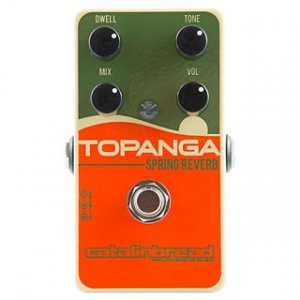
Check out our in-depth article about the Best Spring Reverb Pedals.
| Go back to list of reverb types |
—
• Real Spring Reverb Pedals (Analog)
The pedals in this list are analog and contain real spring inside, just like the original amp unit. This is why they all have a rather large footprint.
- Surfy Industries SURFYBEAR Compact
A real spring pedal with two analog presets from a builder specializing in this niche. It features useful controls like a boost (to make up for lost volume when the effect is on) and souble mixer (to switch between two reverb settings). The Dwell knob controls the amount of reverb and Decay its length. It also has a Tone knob. Check out the bigger SurfyBear Metal.
Pros: the best sounding reverb in this list, very tweakable | Cons: very large and rather pricey. - Demeter RRP-1 Reverbulator
The first-ever reverb pedal with actual springs inside, and still one of the best-sounding, the RRP-1 uses two separate Accutronix spring tanks (long and short, each with different decay times), to provide multiple reverb options. A Phase switch flips the phase on the long decay spring, offering additional sonic possibilities. The two springs can be used individually or combined, which generates luscious, multi-dimensional ambiance sounds.
Pros: the two, differently-sized springs open up a host of sonic possibilities | Cons: the controls on the front panel are not easily accessible. - Anasounds Element La Brute
A pedal concept based on an all-analog spring reverb transducer unit, which connects remotely to one of three different real spring reverb tanks (La Brute is the medium-size one, which is the most popular and best-sounding to most ears). The main box gives you the front end of a Fender Twin Reverb, for a super-clean pedal platform with tons of headroom, while the three tanks offer varying size/decay time options. The Spring Saturation toggle creates a unique fuzz/overdrive sound.
Pros: the remote tank concept is brilliant and the three tanks are rather affordable | Cons: the larger tank is truly humongous, while the smaller one gets mixed reviews.
Check out our in-depth article about the Best Spring Reverb Pedals.
| Go back to list of reverb types |
—
• Mini Spring Reverb Pedals (Digital)
This is a list of the best mini reverb pedals simulating the effect of the classic spring reverb. Created for the guitarists with little room to spare on their board, these are also digital effects, normally with limited features but a friendlier price tag.
- Wampler Mini Faux Spring Reverb
A reduced version of the company’s Faux Spring Reverb, emulating the spring reverb used in many records from the ’60s.
Pros: Great, wide sound in a mini enclosure | Cons: not as drippy as other pedals in this list; the knobs are so close is hard to turn them. - Mosky MP-51 Spring Reverb Mini
A super affordable, but rather popular, Chinese emulation of the Malekko Omicron Spring.
Pros: Great for the price. | Cons: cheap build + not very authentic. - Tone City Tiny Spring
Affordable, one knob (reverb level), no-frills but great sounding analog spring delay pedal.
Pros: affordable and well-built | Cons: not tweakable at all
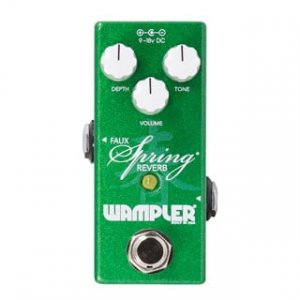
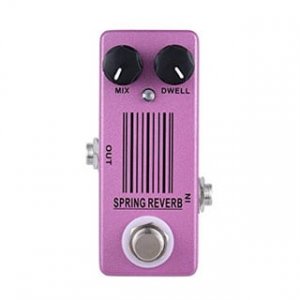
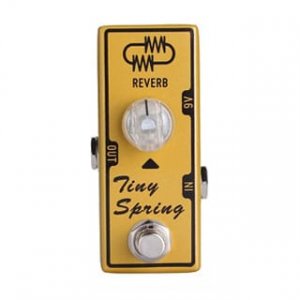
Check out our in-depth article about the Best Spring Reverb Pedals.
| Go back to list of reverb types |
—
| MULTI-MODE REVERB PEDALS |
Spring reverb is not the only kind of reverb that sounds good on a guitar. Other common types like Plate, Room, and Digital, for example, are very popular, but a lot more variations are possible with a little creativity, like Reverse and Gated reverb or the infamous Shimmer effect.
Some pedals offer guitar players the whole menu of reverb types with several modes to choose from. These are normally referred to as “Multi-Mode” reverbs (or Multiverbs, or Reverb Workstations), but some are “more multi” than others…
Genres Multi-Mode Reverbs are good for:
Any genre, depending on the mode selected.
• Reverb Workstations (deep tweakability, lots of modes)
These studio-grade pedals are highly recommended for guitarists who have the patience to explore various settings. They are extremely powerful, great-sounding digital machines, but require some dedication to learn how to unleash their potential. These are not cheap devices but are widely considered as some of the best reverb pedals on the market.
- Strymon BigSky
It delivers 12 studio-class stereo reverb algorithms. Diffused reflections and slower-building density are hallmarks of the Big Sky, as heard in the Bloom, Cloud, Chorale, Shimmer, and Nonlinear algorithms. Controls for Decay, Pre-Delay, Mix (wet/dry), Tone, Mod and two effect-dependent Parameters make the pedal easy to use in any situation.
Pros: it offers a variety of lush, great-sounding, and tweakable stereo sounds, from classic to creative. | Cons: Expensive and large. - Source Audio Ventris
It features two separate 56-bit reverb processors and a host of reverb algorithms from traditional to out there. Run the dual reverb effects in a parallel or cascading signal path, or split your reverbs and send a different effect to each of the two outputs. Seamless “spillover” from one preset to the next prevents tails from cutting off. It includes 4 presets and useful Pre-Delay and Treble knobs.
Pros: Smaller than the competition, and yet dual engine. | Cons: it doesn’t shine on ambient sounds like other devices in this list. - Empress Effects Reverb
Small footprint, 24 stereo studio-quality algorithms and 12 algorithm types, including realistic simulations of Room, Hall, Plate and Spring, plus the unusual Sparkly, Modulation, Reverse, Ghost and Lo-Fi mode. Beer mode gives you access to creative reverbs. It can be updated with new algorithms as they become available. Midi/CV compatible.
Pros: It has the ability to conjure up a wide range of tones and creative tweakable soundscapes. It’s a lot smaller than the competition. | Cons: It’s quite expensive and doesn’t shine on “classic” reverb tones.
Check out our in-depth article about the Best Multi-Mode Reverb Pedals.
| Go back to list of reverb types |
—
• Compact Reverbs with 5+ Modes
In this list, do-it-all pedals that are more compact, easier to navigate, more streamlined in features, and therefore also a lot more affordable than their bigger brothers above.
- BOSS RV-6
A Stereo in/out reverb by the Japanese pedal standard bearer that offers eight separate modes including shimmer, dynamic and reverb+delay, and three simple knobs to control them all. It features an input for expression pedal.
Pros: relatively affordable and great sounding. | Cons: no trails on/off option and the Mode knob is hard to navigate on a dark stage. - Electro-Harmonix Oceans 11
A mono reverb packing 11 modes: Hall, Spring, Plate, Revrs (reverse), Echo, Trem (tremolo and reverb), Mod (three-mode modulated reverb), Dyna (dynamic-response reverb), Auto-Inf (infinite crossfading reverb), Shim (shimmer) and Poly (polyphonic reverb with two configurable bidirectional pitch shifts). There are only three knobs (FX Level, Time and Tone), but a host of secondary controls allow access to “hidden” parameters to fine-tune the effect. An internal Tails switch provides fadeout or decay if switched to bypass.
Pros: versatile, great-sounding, reasonably priced. | Cons: the complexity of the secondary functions makes it hard to recall some settings without presets. - TC Electronic Hall of Fame 2
V2 of this iconic reverb pedal includes a new Shimmer reverb that pitches your reverb up an octave through each feedback loop to deliver an otherworldly sound. In addition, it has modes for Room, Hall, Spring, Plate, Church, Mod and Lofi reverb as well as three dedicated TonePrint slots for storing signature effects. It also lets you design your own customized reverb effects from scratch with the free TonePrint Editor. Other features include an innovative pressure-sensitive footswitch and Analog-Dry-Through technology that maintains total integrity of the analog dry signal path even when reverb is engaged.
Pros: incredibly flexible thanks to Toneprint. | Cons: No reverse reverb and TC is now owned by Behringer/Music Tribe, a company that may not deserve your cash.
Check out our in-depth article about the Best Multi-Mode Reverb Pedals.
| Go back to list of reverb types |
—
• Multi-Mode Smaller Reverbs with 3/4 Modes
Not as all-encompassing as the two previous categories in this section, these pedals offer a few reverb modes but quality ambiance.
- Walrus Audio Fathom
Four customized reverb settings, including Hall, Plate, Lo-Fi, and Sonar, which features high and low octaves that can be blended to taste with the original signal. In addition to three levels of modulation, a Dampen knob suppresses high frequencies and an X control adjusts algorithm-specific parameters. The Sustain switch momentarily increases reverb time to near-infinite when pressed. Trails/No Trails modes.
Pros: A more creative, boutique take on the 3-mode reverb format. | Cons: It ain’t cheap and it doesn’t do spring reverb. - UAFX Golden Reverberator
A digital, Stereo, 3-mode (plus 1) reverb pedal with 3 variations for each mode, preset capability, and six knobs controlling Decay, Pre-Delay, Mix, Bass, Treble and Modulation. Modes include Spring 65 (amp-like reverb), Plate 140:, Hall 224: inspired by late-1970s digital reverb algorithms. Bonus Effects are a vintage digital Plate and Chamber 224 reverb.
Pros: Great sounding reverb algorithms used in tons of recording studios before they made into this pedal. | Cons: Midi integration and Expression input would have been useful. - Chase Bliss Dark World
A feature-rich reverb with a “World” channel designed by Keeley that houses Hall, Plate, and Spring algorithms, and an edgier “Dark” channel designed by Cooper FX. The channels can be routed in 33 ways, creating a varied palette of reverb ranging from subtle, tasteful, and lush all the way to broken video cassette, glitch shimmer, and infinite freeze. Tweakers will enjoy the sonic options delivered by the 16 DIP switches on the back case, and the routing and expression pedal options are a nice extra.
Pros: A unique and super-tweakable reverb with great routing options. Cons: It’s mono and might be a little overwhelming for the “less is more-type” guitarist.
Check out our in-depth article about the Best Multi-Mode Reverb Pedals.
| Go back to list of reverb types |
—
• Multi-Mode Reverbs Under $100
Yes you can find some incredibly affordable multi-mode reverb pedals – the DigiTech Polara, in particular, is an incredible deal by a reputable builder.
- Flamma FS02
A very affordable multi-mode stereo reverb with 7 modes (Room, Hall, Church, Cave, Plate, Spring, Mod) each coming with a storable preset. The controls are extremely useful and not generic: Level, High-cut, Low-cut, Decay, and Pre-delay.
Pros: Affordable, stereo, presets, 5 useful knobs… it’s got them all! | Cons: Not very tweakable, and needs a 300mA PSU that’s not included.The modes aren’t printed on the pedal, which requires memorizing the number they are associated with. - Nux Damp Reverb
Remarkably, this is the first mini pedal with stereo in/out – thanks to its two TRS jacks. It offers 3 modes (Plate, Spring and Hall) inspired to specific circuits (the EMT 140 plate reverb, the early spring reverbs found in Fender amps from the ’60s and the hall reverb found in the 1978 Lexicon 224). As if that was not enough, it offers Trail mode and Shimmer and Freeze secondary functions when holding the footswitch.
Pros: Insane price, stereo, and versatile. | Cons: Some modes sound better than others. - Electro-Harmonix Holy Grail Neo
With Spring, Plate, and Hall reverb algorithms, the Holy Grail Neo provides the most sought-after ambiances in an easy-to-use, pedalboard-friendly stompbox. Select the reverb of your choice with the three-position switch and use the Reverb knob to mix the wet and dry signals. The almost identical Holy Grail Nano version replaces the Plate mode with a more unusual Flerb mode, a flanged reverb.
Pros: 3 of EHX’s renowned reverb algorithms, at a fraction of the cost. | Cons: 100% untweakable! Many people find the Reverb knob too abrupt.
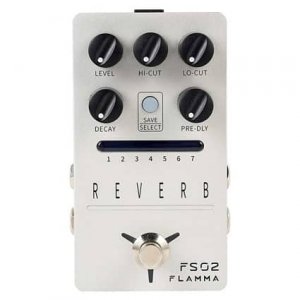
Check out our in-depth article about the Best Multi-Mode Reverb Pedals.
| Go back to list of reverb types |
| CREATIVE REVERB PEDALS |
In the 1960s, reverb, together with delay, became the central effect of the psychedelic rock movement (early Pink Floyd is a testament to that). In its various reincarnations (like Shoegaze, Dream Pop, and Avant-Indie) psychedelic music has been the most important driver of sonic experimentation in popular music, quietly propelling a race for reverb (and delay) pedals with “out there” sonic features.
This list includes this kind of device targeting guitarists with experimental and psychedelic leanings.
Genres Experimental Reverbs are good for:
Shoegazer, Ambient, Psychedelic Rock/Pop, Avant-Indie, Experimental.
• Single Mode Ambient Reverbs
In this list we included clean reverb pedals that are perfect for the shoegazer genre or other musical genres with big sonic soundscapes.
- Meris Mercury 7
An adventurous, Midi integrated, stereo modulated reverb with intra-tank pitch-shifting featuring a reverb algorithm inspired by Vangelis’ score of the 1982 film Blade Runner. Two reverb modes: Ultraplate, a lush plate-style reverb with fast buildup; and Cathedra, a massive, ethereal and slow-building reverb. Momentary Swell footswitch and full modulation control.
Pros: Great concept, great sounds, swell momentary effect, stereo, 16 internal presets. | Cons: Expensive, but hey… - EarthQuaker Devices Afterneath V3
An otherworldly reverberation machine that uses a cluster of short delays to create wild and cavernous reverberations with scattered, rhythmic and modulated reflections. Unlock new realms of immersive ambience with expression or CV control over the Drag parameter now with 9 unique modes as well as tails/no tails operation.
Pros: Inspiring and unique, straightforward controls, Exp/CV integration. | Cons: So unique it may not be for all ambient guitar lovers. - Catalinbread Soft Focus
A digital pedal that recreates the Yamaha FX500 patch used by Slowdive in their album “Souvlaki.” A time-adjustable modified plate reverb is sent in parallel to an octave up and a chorus. The Mod knob controls the rate of the chorus and the Symphony knob controls the level of the octave.
Pros: It nails the sound of the digital rack reverbs of the ’80s. | Cons: Rather limited in scope and range.
Check out our in-depth article about the Best Ambient/Shoegazer Reverb Pedals.
| Go back to list of reverb types |
—
• Multi-Mode Ambient Reverbs
In this list we included clean reverb pedals that are perfect for the shoegazer genre or other musical genres with big sonic soundscapes.
- Walrus Audio Slötva
A creative, atmospheric reverb with presets delivering modulated, sleepy soundscapes through 3 algorithms: Dark adds a lower octave to the trail – X knob controls the octave’s volume; Rise is an auto-swell reverb – X controls the length of the rise after a note is played; Dream is a lush reverb with a latching pad function; the X knob here adds vibrato to the effect, controlling its depth. Check out also the previous version without presets, the more affordable Walrus Audio Slö.
Pros: Great sounding and inspiring ambient tones. Presets addition is great. | Cons: It doesn’t do “normal” reverb, but that’s the point. - Death By Audio Rooms
A multi-function stereo digital reverb that treads new sonic ground with some unusual algorithms targeting the adventurous guitarist (Room, Digit, Peak, Gate, Wave, and Gong). Long trails, gong tones, gated reverbs, and mangled long trails are just some of the stereo effects you can add to your sound. The knobs control different parameters depending on the mode, while the Alt footswitch morphs between two variations within the same mode, using the small F D T knobs for the 2nd tone.
Pros: Stereo, tons of creative sounds. | Cons: Rather bulky. - Red Panda Context
An ’80s-style digital experimental reverb with 8 algorithms with enough knobs to let you get the right combination of pre-delay, reverb time and tone. V2 adds modulation, “spring” and “grain” settings. Plus, stereo in/out, USB MIDI, fully assignable expression pedal, delay plus reverb in all modes, separate high and low-frequency damping controls, modulation, dynamic reverb, and infinite hold.
Pros: Stereo, super-tweakable and inspiring. | Cons: It may be a little too out there for some guitarists.
Check out our in-depth article about the Best Ambient/Shoegazer Reverb Pedals.
| Go back to list of reverb types |
—
• Reverb+Delay Pedal Combos
These pedals offer both Reverb and Delay IN ONE BOX, a classic combination in all music influenced by psychedelic and ambient.
- Keeley Caverns V2
A very popular pedal that combines reverb and analog-style tape delay with modulation options. It has three modes: Spring, a blackface amp-style spring reverb with Fender-esque tremolo; Modulation, which adds choral modulation to the reverb; and Shimmer, which emphasizes octave-up voices in the reverb trails. - Earthquaker Devices Dispatch Master V3
An evergreen delay + reverb with a character that’s luscious and haunting at once. Its dark and ambient quality doesn’t sound unnatural. It’s extremely simple to use, with only four knobs for Mix, Time, Reverb (length) and Repeats (delay). - Source Audio Collider
Two best selling effects embedded in a stereo Delay+Reverb effect with Midi, Tap Tempo and Freeze function. It includes a choice of 5 delay algorithms that can be combined with 7 reverbs for effects ranging from the subtle to the sci-fi.. 4 of the 6 knobs have a double function through a three-way toggle switch. Control knobs affect algorithm-specific settings.
Check out our in-depth article about the Best Octave-Up + Reverb Pedal Combos.
| Go back to list of reverb types |
—
• Reverb Pedals with Fuzz/Distortion
Reverb combined with any kind of distortion can create a variety of tones with the potential to intrigue guitarists with experimental tendencies.
Popular Genres:
This combo is particularly loved by psychedelic, shoegazer and noise-rock guitarists.
- Caroline Météore
A Lo-Fi reverb with controls for Level (Mix), Attack, Size and Regen. Attack sets the amount of gain in the preamp, allowing you to overdrive the reverb, Size sets the initial reverberation, and Regen extends decay and adds overtones. A Dark/Bright switch sets the pedal’s voice, while the Havok footswitch can create extended or abrupt decays, depending on the Size setting.
Pros: a cool and unique lofi approach to reverb. | Cons: some players don’t like the fixed pre-delay setting. - Keeley Loomer
A modulated reverb + fuzz pedal with Focus, Hall and Reverse modes and Flat, Full or Scoop for fuzz. Hall mode includes an octave in a feedback loop for “ascension shimmer” effects, while Reverse creates rhythmic reverse reverbs. Soft Focus features a dense reverb with two parallel delays. Knobs for Tone, Warmth, Depth (modulation), Filter and Fuzz let you sculpt a vast range of tones.
Pros: delivers classic shoegazer tones, in one box. | Cons: while the fuzz is top-notch, the reverb side is a little limited. - Death by Audio Reverberation Machine
Its minimal knob set makes it possible to quickly change the character of the reverb. Altitude is similar to gain and can be used to create a more wide-open and distorted sound. Verb controls the reverb level, and the Dark/Light switch can take the ambiance from cavernous to brightly shimmering in an instant.
Pros: it can deliver a wide range of insane gritty, distorted (or clean) soundscapes. | Cons: not for purists.
Check out our in-depth article about the Best Hybrid Reverb Pedals.
| Go back to list of reverb types |
| STEREO REVERB PEDALS |
In real life, we always hear reverb in stereo. While a mono reverb is good enough for most guitar-related applications, stereo reverbs better emulate reality and also open up a lot of creative options. Many of the pedals listed in this article are stereo (including all the Multi-Mode ones), in this list, we highlight 3 of the most popular stereo pedals.
Popular Genres:
Ambient, Dream Pop, Mellow Pop, Synthpop.
- Chase Bliss Audio/Meris CXM 1978
A collaborative pedal adaption of the venerable (1978) Lexicon studio reverb, built on the moving-fader format of Chase Bliss Audio’s Automatone series and featuring three algorithms (Hall, Room, Plate). Also features a LoFi Mode for vintage digital sounds and an Adjustable Decay Crossover for a fully shapeable reverb tail.
Pros: stellar concept, tons of inspiring features, moving faders/parameters!!! | Cons: Super-expensive, no modes, big footprint. - Strymon Blue Sky
A powerful and lush sounding, studio-grade digital reverb with three reverb types (Plate, Room and Spring) and three modes (Normal, Modulation and Shimmer), for a total of nine separate combinations. A full pre-delay and damping section provides deep reverb tone shaping.
Pros: a modern classic, great sounding wide range of tones. | Cons: only one preset - Flamma FS02
A very affordable multi-mode stereo reverb with 7 modes (Room, Hall, Church, Cave, Plate, Spring, Mod) each coming with a storable preset. The controls are extremely useful and not generic: Level, High-cut, Low-cut, Decay, and Pre-delay.
Pros: Affordable, presets, plenty of control. | Cons: sound and build quality are not as exceptional as the two previous options.
Check out our in-depth article about the Best Stereo Reverb Pedals.
| Go back to list of reverb types |
| REVERB PEDALS WITH MODULATION |
A more recent trend in the pedal world is the one of pedal offering creative reverb devices with modulation, an effect that can add a feeling of lush, vintage warmth, or – at extreme settings – wildly alienating and detuned textures.
• Reverb Pedals with Chorus/Flanger
Popular Genres:
Ambient, Dream Pop, Mellow Pop, Synthpop.
- JHS Hall Reverb
A simple, large ambiance reverb with a modulation toggle switch. The amount and size of the reverb can be controlled through the Verb and Decay knobs, while the effect can be darkened via the Dampen control. The modulation is applied to the wet signal only and can be turned on and off through a toggle switch.
Pros: affordable unit from a reputable name. | Cons: errs on the side of “usable” (i.e. edgy guitarists may want to look at other options). No momentary effect. - Old Blood Noise Procession
A haunting and creative reverb featuring three modulation settings: Flange, Filter and Tremolo). Hold switch is a momentary footswitch that when pressed, will lock in whatever note is being played through the reverb effect. The Mix and Reverb knobs control the mix of dry/wet signal and the decay of the reverb, respectively, while Speed and Depth control the modulation.
Pros: wide palette with three creative modulation modes. | Cons: it sounds more ambient/experimental than realistic. - EarthQuaker Devices Transmisser
A modulated reverb with extra-long decay fed to a resonant filter that does not do subtle. There are controls for Decay, Darkness (reverb tone), Freq (filter frequency), Rate (modulation speed) and Mix. Turn up the Warp control to make the filter deeper and more resonant, the decay longer and the modulation wider.
Pros: a unique and inspiring modulated reverb. | Cons: Not a subtle kind of pedal.
Check out our in-depth article about the Best Hybrid Reverb Pedals.
| Go back to list of reverb types |
—
• Reverb Pedals with Tremolo
Reverb and Tremolo is a classic effect pairing for electric guitar. This combo was launched – once again – by amp manufacturers in the ’50s and ’60s (Vox AC15/AC30 and Fender Deluxe) and has, therefore, gained classic status. Here are some examples (with advice) about how this combination sounds.
Popular Genres:
Almost anything traditional: Blues, Country, Alt Rock, Folk, Rock’n’Roll, but mostly… Surf!
- Strymon Flint
Offers three classic reverb modes (’60s Spring, ’70s Electronic Plate, and the ’80s Hall Rack) with the tremolo pioneered in vintage amplifiers, in Stereo. The tremolo tones include the ’61 Harmonic Tremolo, the ’63 Power Tube Tremolo, and the ’65 Photocell Tremolo. Reverb has controls for Color (tone), Decay, and Mix, while tremolo features knobs for Intensity and Speed.
Pros: Sounds great in mono and stereo; cool modes with historical angle + lets you place reverb before tremolo. | Cons: Pricey. - Keeley Hydra
A compact Stereo Reverb + Tremolo with 3 modes (Spring, Plate or Room) and tap-tempo enabled Harmonic, Vibrato, or Sine Wave Tremolo. Each effect has its own footswitch and can be placed first in the chain. Dual function knobs are accessible by holding the Color knob, (black fonts for Tremolo, white fonts for Reverb). Includes Trails, remote switching compatibility, Expression and Tap-Tempo ins.
Pros: Great tones in a compact enclosure; stereo; beats the Flint on tap tempo and presets. | Cons: Single mode. - Source Audio Spring
A Stereo digital pedal derived from the Ventris but built specifically to deliver the most authentic spring reverb sound. Three modes emulate classic vintage effects, while the Dwell knob simulates how hard the spring would be pushed. A button in the back turns on a Tremolo effect, also featuring three modes (Bias, Opto and Harmonic).
Pros: Painstakingly authentic modes, presets. | Cons: Tremolo functions not immediately accessible; no tremolo footswitch (can be purchased separately).
Check out our in-depth article about the Best Reverb + Tremolo Pedal Combos.
| Go back to list of reverb types |
| REVERB + OCTAVE-UP PEDALS |
Brian Eno and Daniel Lanois invented the shimmer effect when they mixed an octave-up effect with a reverb back in the ’80s. Boutique pedal builders rediscovered that effect in the aughts and encapsulated it in a few models. The devices in this list don’t just do shimmer but a wider range of octave-up + reverb effects.
Popular Genres:
This is a combo for ambient guitarists and dreamy soundscape seekers: Ambient, Dreampop, Shoegaze, an GloFi.
- Earthquaker Devices Astral Destiny
A spacey, creative, multi-mode, modulated Reverb with 8 preset slots featuring a pitch shifting engine that can deliver upper and lower octaves and fifths and also ascending/descending bending pitch effects. The Stretch footswitch doubles the length of the reverb while adding an adjustable pitch-bending effect. - JHS 3 Series Octave Reverb
An affordable take on the so-called “Shimmer” effect, a circuit that marries a long ambient reverb with an octave effect placed in the reverb’s decay. The three knobs are for Verb, Octave and Decay, while the toggle switch gives you the option to switch the octave from octave-up to octave-down. - Walrus Audio Descent
Three Reverb modes (Hall, Reverse and Shimmer) can produce tones one octave above and below the original signal to create a symphony of sound. Eight rotary controls, several of which change function depending on the mode selected. Aux in for momentary switch can call up three custom presets.
Check out our in-depth article about the Best Octave-up + Reverb Pedal Combos.
| Go back to list of reverb types |
Here are a few videos that can help you understand the differences between the various reverb pedal offerings.
• Choosing the right Reverb Pedal (Reverb.com)
• 8 Tips, How to choose the Best Reverb Pedal (for you!) (Chords of Orion)















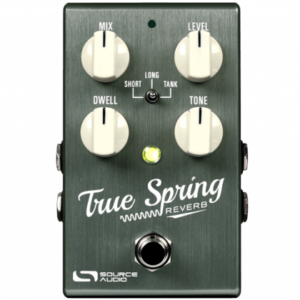
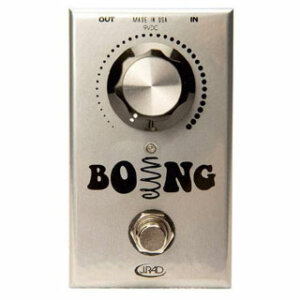
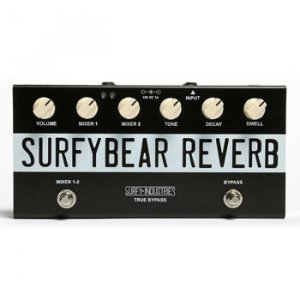
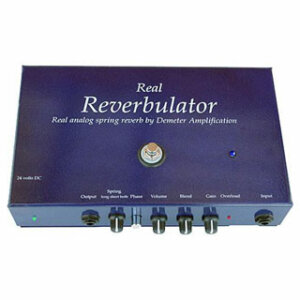
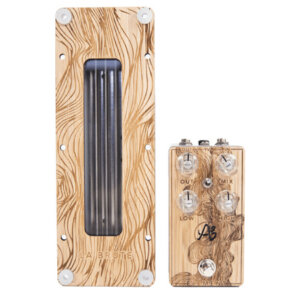
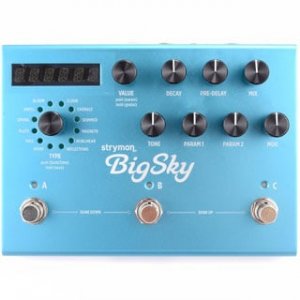
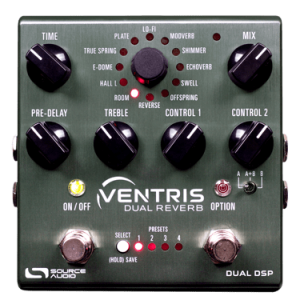
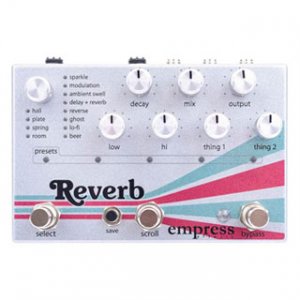
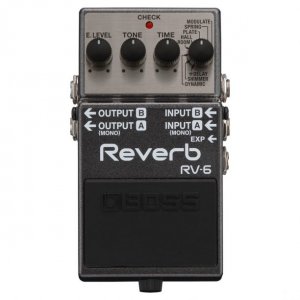
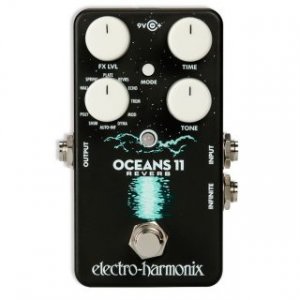
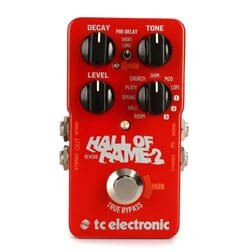
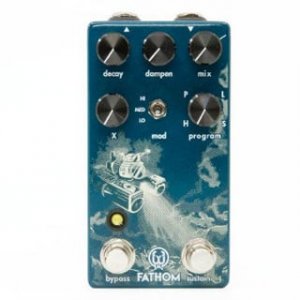


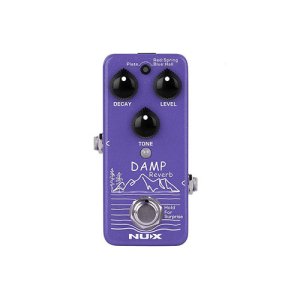
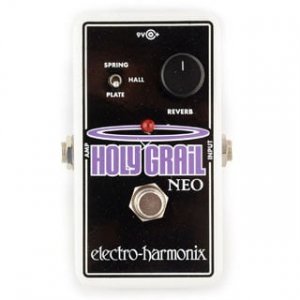
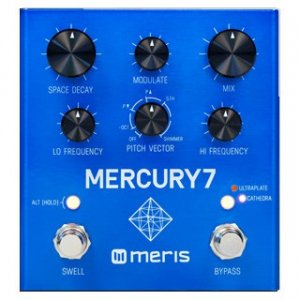
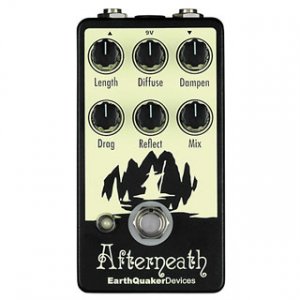
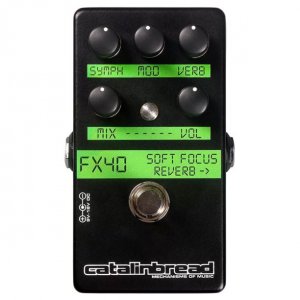
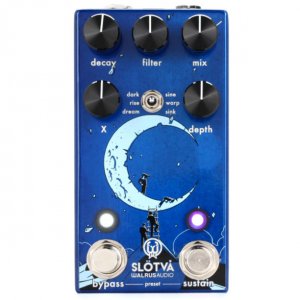
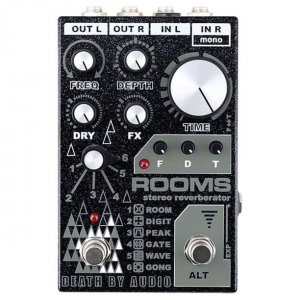
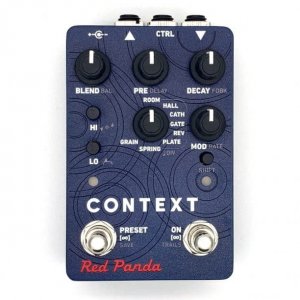


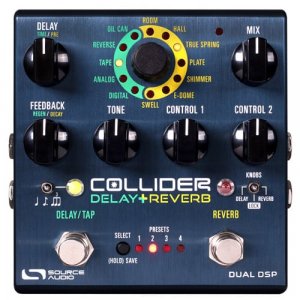

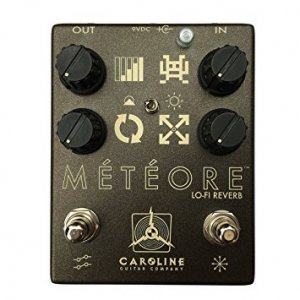

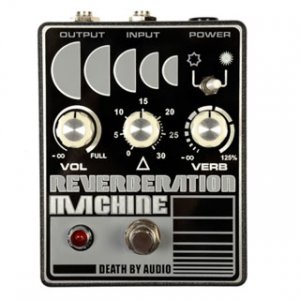
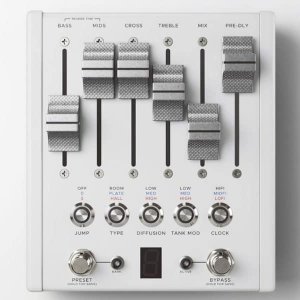

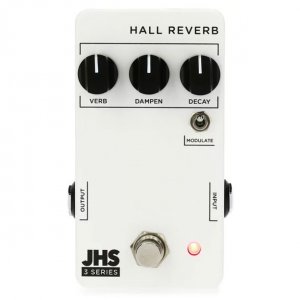
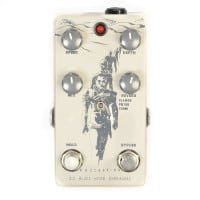
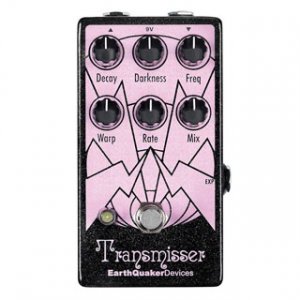
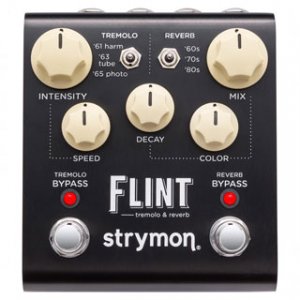

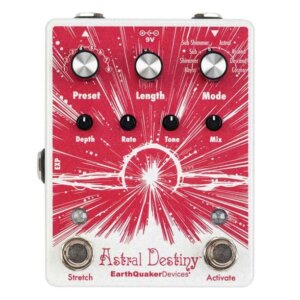
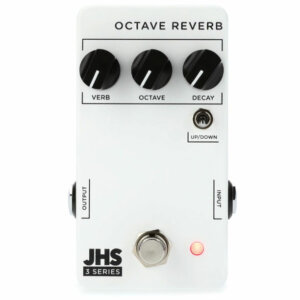
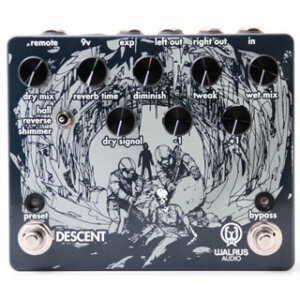








5 comments
Slighter says:
Mar 15, 2021
Crazy Tube Circuits Splash mk3
Paolo De Gregorio says:
Jul 26, 2021
Hi SLIGHTER, yeah that’s a very cool reverb pedal, but this is a list of the top three most popular for each category, you can find the Crazy Tube Circuits Splash mk4 listed in the article dedicated the Multi-Mode Reverb pedals here: http://delicious-audio.com/best-multi-reverb-pedals/
Reuben says:
Nov 27, 2021
What about UA golden reverberator?
Paolo says:
Feb 23, 2023
Added on the February 2023 update!
Guillaume says:
Nov 14, 2022
I would have love to see the Golden Reverberator by Source Audio here. It was the answer to my long time seach for natural sounding reverb. It nails the spring, plate, hall and chamber. It offers modulation, predelay, Bluetooth mode enables to load and save custom presets